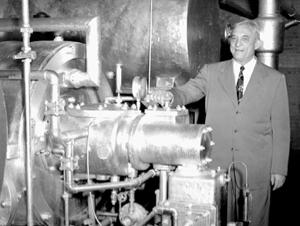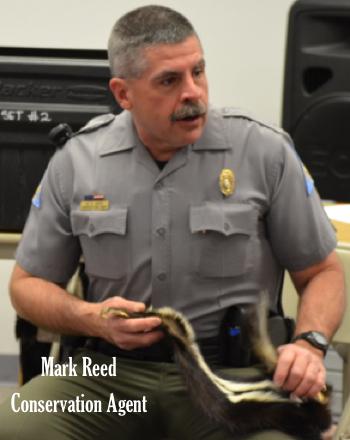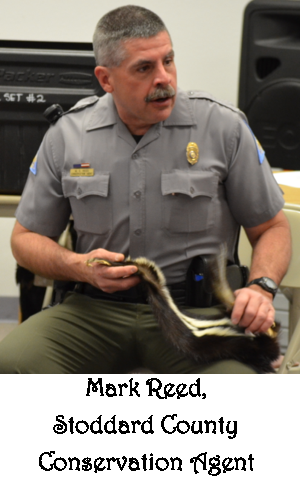
Written by Jessica Danielle
Have you ever wondered what life would be like without air conditioning?
Most would say~ “HOT!!!” or “What do you mean no air conditioning? It’s a 100 degrees outside!”
Well, if this is your response then you better thank Mr. Willis Carrier. In 1902, Carrier drew out his plans for the first air conditioner.
Willis Carrier was not thinking of the need to beat the heat. He had recently graduated from Cornell University and was making ten dollars a week working for the Buffalo Forge heating company in upstate New York.
Willis was asked to find a solution for a printing company in Brooklyn that was having some major problems. The company’s paper was expanding and contracting in the variable East Coast humidity.
The printing company had a four-color printer, which means one color was applied at a time. In between each color printing the paper would expand or condense causing the ink to become muddy.
The system that Carrier devised still forms the basis of the air conditioner or, more accurately, the humidity controller today. Air was forced through a filter of a piston-driven compressor, where it was pumped over coils that were chilled using coolant. The cold air was then expelled into a closed space using a fan, cooling the room and stabilizing the humidity.
Carrier later switched from piston power to a centrifugal chiller, which allowed much larger spaces to be cooled. He also replaced the toxic ammonia that had been the original cooling agent.
The air conditioner was just what the Brooklyn printing company needed. The humidity problem vanished, and — as the word got out — other companies began clamoring for Carrier’s machine.
Paper victories aside, the effect on humans was tremendous. Although commercial outfits such as manufacturing plants were the first customers, Carrier kept fiddling with his invention.
By 1915, he was running his own company, Carrier Engineering Corp., which supplied cooling systems to hotels, department stores, theaters and, eventually, private homes. Among Carrier’s early big-ticket customers were the U.S. Congress, the White House and New York’s Madison Square Garden.
The impact of air conditioning can’t be overstated. The population shift in turn changed the political balance of the nation. Even the nature of architectural design changed, with perhaps the most conspicuous example being the smoky glass-clad skyscrapers that now dot almost every big-city skyline.
Carrier died in 1950, at the age of seventy-three, but his company still exists and remains a major manufacturer of cooling and refrigeration systems.
Today wherever you are be thinking of Mr. Willis Carrier and his excellent invention~ the air conditioner….today, July 17th is the anniversary of the invention that we all love during the summer months.
Our weather forecast for the remainder of the week is HOT! Everyone please drink plenty of water, stay as cool as possible and take a moment to thank Mr. Carrier!

Submitted by
Ruth Dockins
I just received the following information about diabetic testing supplies from my contact at the Center for Medicare/Medicaid Services (CMS). I know there are lots of people in our area that are diabetic and using testing supplies, and this is very important information.
Starting July 1, 2013, Medicare is scheduled to implement a national mail-order program for diabetic testing supplies, which is designed so you can save money while continuing to receive quality supplies. When it starts, rather than having an approved amount of $78 for 100 test strips and lancets, Medicare’s approved amount will be around $22 – and your copay will go from $15 to under $5. In order to save money under the national mail-order program, you’ll need to use a Medicare national mail-order contract supplier. The national mail-order program will include all 50 states, the District of Columbia, Puerto Rico, the U.S. Virgin Islands, Guam and American Samoa.
For a list of mail-order Medicare contract suppliers, visit medicare.gov/supplier. Enter your zip code, select “Mail-Order Diabetic Supplies” and hit the search button. You can also obtain a list of contract suppliers by calling 1-800-MEDICARE (1-800-633-4227). If your current supplier is not included in the list, you will have to select a new contract supplier for Medicare to help pay for diabetic testing supplies that you have delivered to your home.
If you don’t want diabetic testing supplies delivered to your home, you can go to any local store enrolled with Medicare and buy them there. When the program starts, you can receive the same savings by purchasing diabetic testing supplies in the store as you would by having them delivered to your home – as long as the store accepts assignment, which means they accept the Medicare-approved amount as payment in full. If the store does not accept assignment, they can charge you more. So, it’s important to check with the store about Medicare assignment if you want to take advantage of the new lower prices.
This program applies to people with Original Medicare. If you’re in a Medicare Advantage Plan (like an HMO or PPO), your plan will notify you if your supplier is changing. Contact your plan for more information.
If you have questions, Medicare has resources to help you understand the new program, including medicare.gov and 1-800-MEDICARE (1-800-633-4227). TTY users should call 1-877-486-2048 or call me at 1-800-392-8771 or locally at 335-3331.

Submitted by
Ruth Dockins
I have had questions recently regarding ambulance services for people on Medicare so I thought this might be a good subject for my Age Spots article. Some of the following information is republished with permission from the Medicare Rights Center, for more information visit www.medicarerights.org .
Medicare covers emergency ambulance services as long as the service is medically necessary. Keep in mind that Medicare considers the event to be an emergency when your health appears to be in serious danger and every second counts to prevent your health from getting worse. If you need to be taken to the hospital due to a medical emergency, Medicare will cover your ambulance ride to the nearest appropriate hospital, as well as any medical services you receive while you are in the ambulance. This does not necessarily mean that Medicare will pay for transportation back to where you are living, because ambulance service is not medical transportation but is emergency medical transportation.
If you need to be taken to a hospital or facility for non-emergency medical services, Medicare will cover your ambulance ride, only on rare occasions. Medicare may cover non-emergency ambulance services if:
· You are unable to get up from your bed without help, unable to walk, and unable to sit in a chair or wheelchair, or
· You need medical services during the trip that are only available in an ambulance and all other forms of transport could harm your health.
For example, Medicare may cover non-emergency ambulance rides to and from a dialysis facility for someone who has kidney failure and needs medical services that can only be provided during the ambulance ride. Also, in order for Medicare to cover non-emergency ambulance rides, a doctor must confirm that the ambulance service is medically necessary. If the ambulance company believes that Medicare won’t pay for your non-emergency ambulance service, they might ask you to sign an Advance Beneficiary Notice (ABN). If you sign the ABN you are responsible for paying the cost of the trip if Medicare doesn’t pay, but you have the right to appeal Medicare’s decision.
If you refuse to sign the ABN, the ambulance company can decide whether or not to take you by ambulance. If they decide to take you after you refuse to sign, you may still be responsible for paying the cost of the trip if Medicare doesn’t. You will not be asked to sign an ABN in an emergency situation.
Know that lack of access to other forms of transportation, alone, does not mean that Medicare will cover your ambulance services. If you have other questions regarding this article please contact me at 1-800-392-8771 or 335-3331.

Submitted by
Mark Reed
Stoddard County, Missouri - Feral hogs have been in the news quite often the last few years. In early April, a landowner near Bell City reported hogs damaging his pasture and wildlife food plots. Other folks in the area reported seeing a group of hogs several times. The Department of Conservation has staff to assist landowners with hog problems and we were working with this landowner when a motorist may have taken care of the problem.
One morning a young man reported hitting several hogs with his truck. I went for a look and sure enough found 8 dead feral hogs. I have not received any more reports so hopefully there are no more hogs in that area. Over the past few years’ feral hogs have been killed in several locations around Stoddard County and counties to the west. Biologists believe there is a population of feral hogs living on Mingo National Wildlife Area and Duck Creek Conservation Area. Staff recently deployed a helicopter to that area in hopes of eliminating several hogs. Only one boar was found and dispatched but evidence of other hogs was present.
Missourians Should Be Concerned
First of all, feral hogs are extremely destructive animals and will eat and destroy wild turkey nests and eggs, fawn whitetail deer, any ground nesting bird or animal, wildlife food plots, agricultural crops, gardens, pastures, hay fields, and pretty much anything else they find including wild foods needed by deer and turkey. Secondly, these hogs are not native animals and are being brought here and released by folks hoping to establish populations.
Some people enjoy hunting feral hogs but most sportsmen are not willing to sacrifice our native wildlife. The economic expense hogs bring with them is hard to estimate, but in addition to their destructive ways, feral hogs may carry any of 32 diseases. Some of these diseases can be transmitted to wildlife and domestic livestock. In addition, swine brucellosis can infect people through handling of feral hog carcasses.
It does not take many hogs to establish a population. Feral hogs can reproduce before they reach one year of age and may have two to three litters each year. Litter size can range from six to eight piglets. Research in southern states indicates that to control a hog population, approximately seventy percent of the hogs must be destroyed annually. Remember, seventy percent harvest will only keep a hog population in check.
Feral hogs are not wildlife in Missouri but some hunting regulations do apply if you are in the field pursuing hogs. Feral hogs may not be released on public land or on private land that is not adequately fenced to contain them. Each hog released represents a separate offense and the release of several hogs can result in felony charges with fines of up to $5000 and an additional $1000 per hog administrative penalty through the Department of Agriculture.
We do not want hogs in Missouri and the Department of Conservation is working towards eradicating this threat to our natural resources and agricultural crops. If you know of someone releasing feral hogs, please call the Operation Game Thief Hotline at 1-800-392-1111.
If you have questions regarding this or other conservation topics, give me a call at 573-421-3240. The Department of Conservation no longer directs hunters to suspected populations of feral hogs. If we locate hogs we will try to destroy them as quickly as possible before they move to a new area.

Submitted by
Mark Reed
Dexter, Missouri - The 2013 spring turkey season is in the books here in Missouri. Statewide hunters harvested 42,220 turkeys, which is an increase of 1,773 from 2012. Stoddard County turkey hunters bagged a total of 304 birds in 2013 compared to 302 last year. The county total includes turkeys harvested during the two day youth seasons. Statewide the Missouri turkey population is strong and surveys show our bird numbers are doing well on the heels of a couple good hatches.
Crappie fishing has been spotty. Weather fronts can make crappie fishing unpredictable as water temperatures fluctuate. Crappie tend to become more active and spawning behavior begins once water temperatures reach the mid 50’s.
Otter Slough anglers have had more consistent success while crappie fishermen at other area lakes report tougher conditions. Anglers should note that the crappie length limit has been eliminated on Otter Slough. All other Otter Slough fishing regulations remain the same and length limits on other area lakes are still in place.
Before a crappie length limit is put in place, biologists must determine the rate of growth on a given lake. Crappie must reach the proposed size within four years or a length limit will not be established. Otter Slough crappie were hitting nine inches in their third year which is excellent growth, however, not many lived long enough to reach that size. Crappie harvest on Otter Slough is so heavy that before the length limit few fish lived long enough to reach quality size. The first couple years the length limit was in place, anglers were able to harvest larger fish, however, crappie have become stunted and very few fish now reach the nine inch length limit.
Biologists believe competition is too great in the lake and too many small crappie are now present. Crappie growth rates will not improve until some are harvested. Hopefully we will see some larger fish within a year or two.
Our cool, wet spring has been a boon to morel hunters. Mushrooms need a little moisture followed by sunny days with night temperatures above 50 degrees. Many folks report this spring as the best mushroom year they can remember. Mushrooms can be harvested on most Department of Conservation areas but remember to ask before entering private land. Trespassing is a crime regardless of why you enter private property. Also remember that private land does not have to be posted in order for a person to be charged with trespass.
If you are not certain of how to identify morels, the Missouri Department of Conservation has an excellent publication, which can help you identify several types of edible mushrooms found in Missouri. To receive a copy of the publication, contact any Missouri Department of Conservation office.

